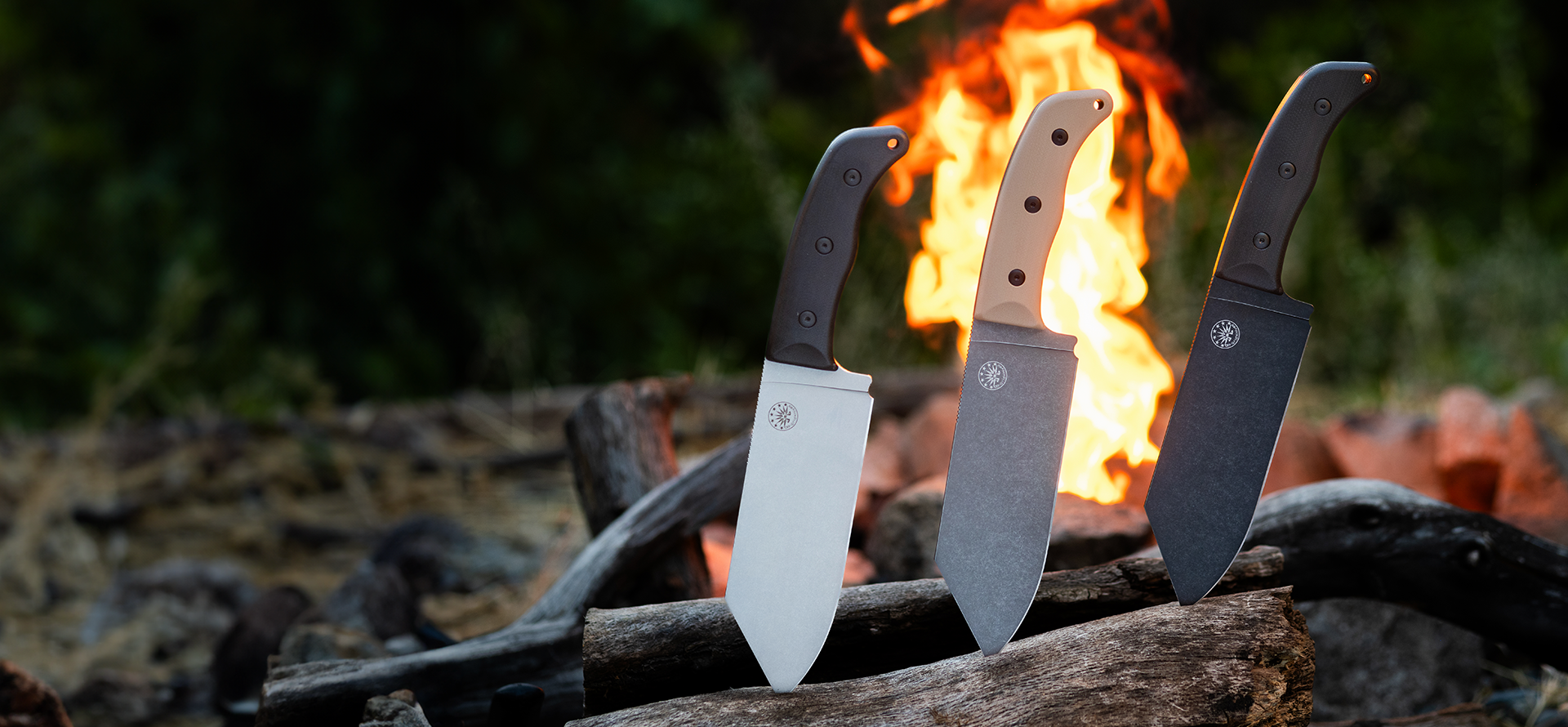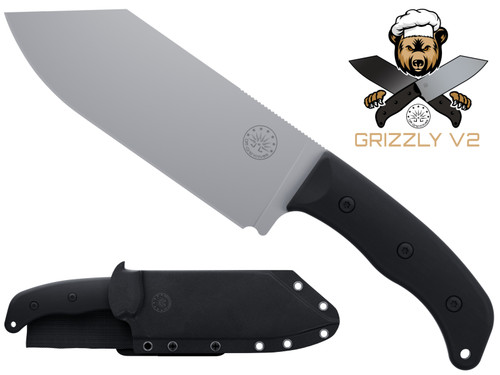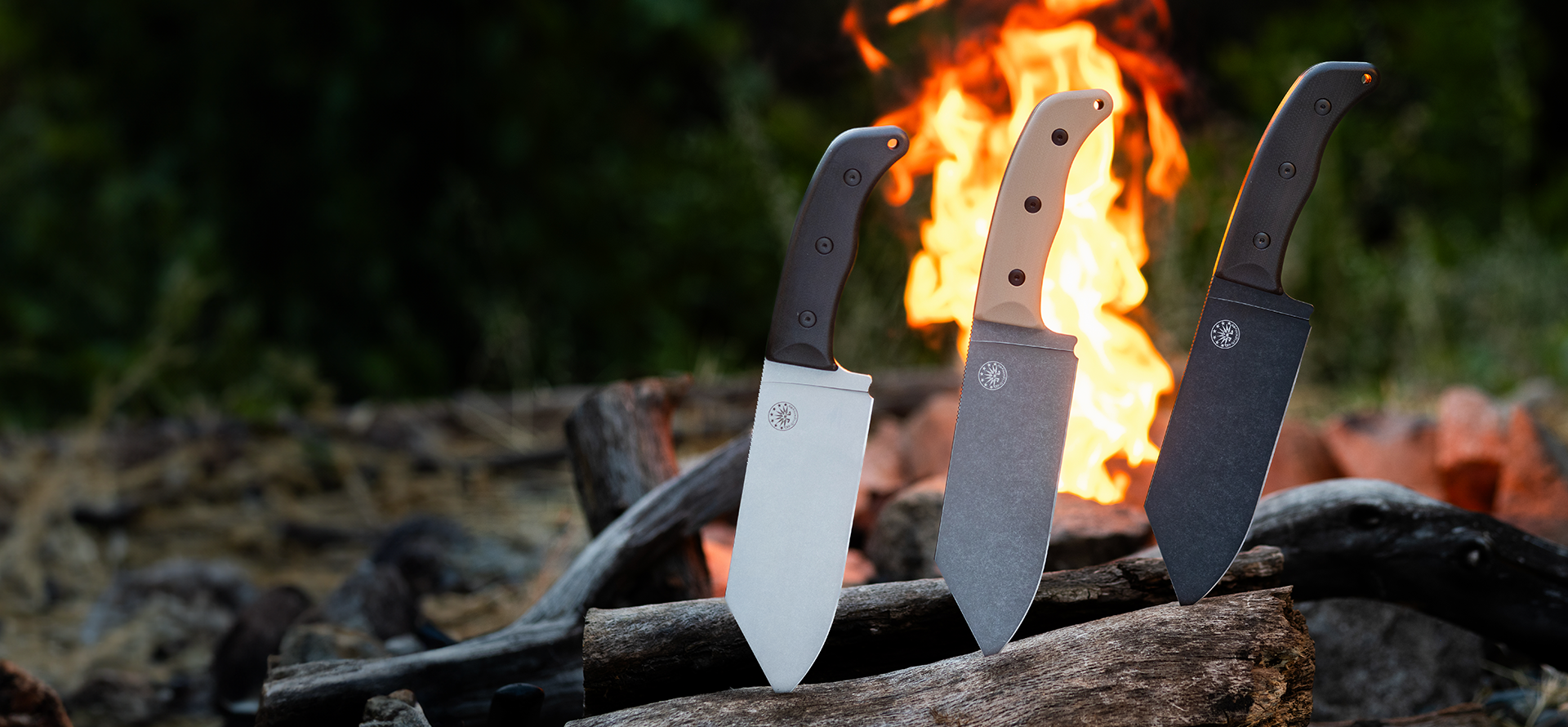Mastering Kitchen Knives: Expert Insights from Off-Grid Knives
Posted by Emran Hossen on Sep 6th 2025
A good kitchen knife is the backbone of every great meal. Whether you’re a professional chef or a home cook, the right knife makes cooking easier, safer, and more enjoyable. In this complete guide, Off-Grid Knives answers the most common questions about kitchen knives—so you can make informed choices and take better care of your tools.

What is the best type of knife for the kitchen?
The chef knife is widely considered the most versatile and essential kitchen tool. It can easily handle chopping, slicing, mincing, and dicing. Two of the best kitchen knives are the GRIZZLY V2 Chef Knife and the SIERRA Chef Knife, both designed to perform heavy-duty kitchen tasks while maintaining precision. Each features premium steel, ergonomic handles, and outstanding durability to withstand everyday cooking demands.
How do I choose the right knife for chopping vegetables, meat, and fish?
Choosing the right knife depends on the type of food you’re preparing:
- Vegetables: A chef knife or Santoku knife is ideal. Their broad blades allow you to chop, dice, and slice vegetables quickly.
- Meat: For raw or cooked meat, a strong chef's knife is best. Its weight and length make it effective for cutting through thick cuts and joints.
- Fish: A thinner, flexible blade, like a fillet knife, works better for fish, though a sharp chef knife can still get the job done.
When selecting a knife, always check for:
- A comfortable grip
- Balanced weight
- High-quality steel that stays sharp longer
What are the best kitchen knives for everyday cooking?

For everyday use, you need knives that can handle a wide range of ingredients. Off-Grid Knives offers some of the most popular options, including
- SIERRA CHEF KNIFE - Coyote – Lightweight, agile, and perfect for daily prep.
- SIERRA CHEF KNIFE – Designed for precision and control in the kitchen.
- GRIZZLY V2 Chef Knife - Stonewash – Rugged durability with a stylish finish.
- GRIZZLY V2 CHEF KNIFE - Coyote – A strong, versatile option for home and professional chefs.
These knives cover all your everyday chopping, slicing, and dicing needs.
What’s the proper way to sharpen a chef knife at home?
A dull knife is more dangerous than a sharp one because it requires extra force, increasing the risk of slipping. To keep your chef knife razor-sharp, you can sharpen it at home using several methods:
- Whetstone (Sharpening Stone): The most effective method. Soak the stone, then glide the knife across at a 15–20 degree angle. This requires practice but gives excellent results.
- Honing Rod: Not technically sharpening, but realigning the blade’s edge. Use it regularly to maintain sharpness between sharpenings.
- Knife Sharpener: A quick and convenient option for beginners, though less precise than a whetstone.
For best results, sharpen your knife every few months depending on usage, and hone it regularly.
How do I prevent my kitchen knives from rusting?
Even the best knives can rust if not cared for properly. To keep your knives in top condition:
- Hand wash only – Never put knives in the dishwasher, as heat and detergent can damage the steel.
- Dry immediately – Always dry knives with a towel right after washing.
- Proper storage – Use a knife block, sheath, or magnetic strip to protect the blade from moisture.
- Oil occasionally – A light coat of food-safe mineral oil prevents rust, especially if you live in a humid area. With simple care, your knives will stay rust-free and last for years.
What are the must-have kitchen knives for home cooks?
Some of the most popular choices from Off-Grid Knives include:
- Chef Knife – The all-purpose workhorse.
- Paring Knife – Great for peeling, trimming, and small tasks.
- Serrated Bread Knife – Perfect for bread, tomatoes, and foods with tough exteriors but soft interiors.
With these three, you’ll be able to handle almost any recipe.
How do I store kitchen knives safely?
Safe storage protects both you and your knife. The best methods include:
- Knife Block: Convenient and keeps blades protected.
- Magnetic Strip: Saves counter space and provides easy access.
- Blade Guards/Sheaths: Perfect for drawer storage or traveling chefs.
Never toss knives loosely in a drawer, as it dulls the blade and poses safety hazards.
The Importance of a Quality Kitchen Knife

A kitchen knife is more than just a tool—it’s an extension of the cook’s hand. A high-quality knife improves efficiency, precision, and safety in the kitchen. Dull or poorly balanced knives not only make tasks harder but also increase the risk of accidents. A well-crafted blade, like those from Off-Grid Knives, allows you to glide effortlessly through vegetables, meats, and herbs, making cooking both faster and more enjoyable. Investing in a premium knife means fewer replacements over time and a tool that grows with you as your cooking skills improve.
Craftsmanship and Design Behind Every Knife
Behind every reliable kitchen knife lies expert craftsmanship and thoughtful design. The blade material, heat treatment, and handle construction all play vital roles in performance. Off-Grid Knives focuses on using premium steel that delivers a perfect balance between sharpness and durability. Each knife is designed for ergonomic comfort, ensuring you can work for long periods without hand fatigue. The precision-engineered edge allows for clean, accurate cuts, while the sturdy build ensures long-lasting reliability. This attention to detail transforms a simple kitchen tool into a professional-grade companion.
Choosing the Right Knife for Your Cooking Style
Every cook has a unique style, and the right knife should complement the way you prepare meals. If you enjoy making hearty dishes and cutting through larger ingredients, a heavier chef knife offers strength and stability. For those who prefer precision slicing and lighter tasks, a slimmer, more agile blade delivers accuracy and control. Our range of chef knives offers options tailored to different cooking needs, so you can choose the one that feels like a natural extension of your hand. Matching the right knife to your style not only makes cooking easier but also more enjoyable.
Frequently Asked Questions:
1. What knife is most often used by chefs?
The chef knife is the most commonly used knife by chefs. Its versatile design allows it to chop, slice, dice, and mince a wide range of ingredients, making it an essential all-purpose tool in both professional and home kitchens.
2. Which size chef knife is best for home cooking?
An 8-inch chef knife is ideal for home cooking. It provides the perfect balance between versatility and control, allowing you to handle everyday tasks like chopping vegetables, slicing meat, and mincing herbs without feeling too heavy or overwhelmed.
3. What’s the difference between a utility knife and a chef knife?
A utility knife is smaller, usually 4–6 inches, and best for mid-sized tasks like slicing fruit or sandwiches. A chef knife is larger, typically 8–10 inches, and designed for more versatile tasks such as chopping, dicing, and slicing larger ingredients.
4. How often should I sharpen my chef's knife?
A chef’s knife should be sharpened every 2–3 months with regular home use. Honing the blade weekly with a honing rod helps maintain sharpness between sharpening sessions, ensuring the knife stays effective and safe for all cutting tasks.
5. What’s the best way to store kitchen knives safely?
The best way to store kitchen knives is in a knife block, on a magnetic strip, or in protective sheaths. These methods keep blades sharp, prevent accidents, and protect knives from damage. Avoid tossing knives loosely into drawers.
6. How do I properly sharpen a chef's knife?
To sharpen a chef's knife properly, use a whetstone at a 15–20 degree angle, gliding the blade evenly on both sides. Alternatively, use a quality knife sharpener. Finish with a honing rod to realign the edge for maximum sharpness.
7. What cutting board is best for kitchen knives?
Wood and plastic cutting boards are best for kitchen knives. They are gentle on blades and reduce dulling. Avoid glass or stone cutting boards, as they can quickly damage and wear down the knife’s edge.
8. Are expensive kitchen knives worth buying?
Yes, expensive kitchen knives are worth buying because they last longer, hold an edge better, and provide more precise performance. A high-quality chef knife is an investment that saves money over time compared to frequently replacing cheaper knives.
9. What’s the difference between a chef knife and a Santoku knife?
A chef knife has a curved blade designed for rocking motions, ideal for chopping. A Santoku knife has a straighter edge, better for precise slicing and dicing. Both are versatile, but preference depends on cooking style.
10. How do I keep my kitchen knife sharp longer?
To keep a kitchen knife sharp longer, hone it regularly with a honing rod, use a proper cutting board, avoid cutting frozen food or bones, and wash and dry it by hand. Proper storage also helps protect the blade.


